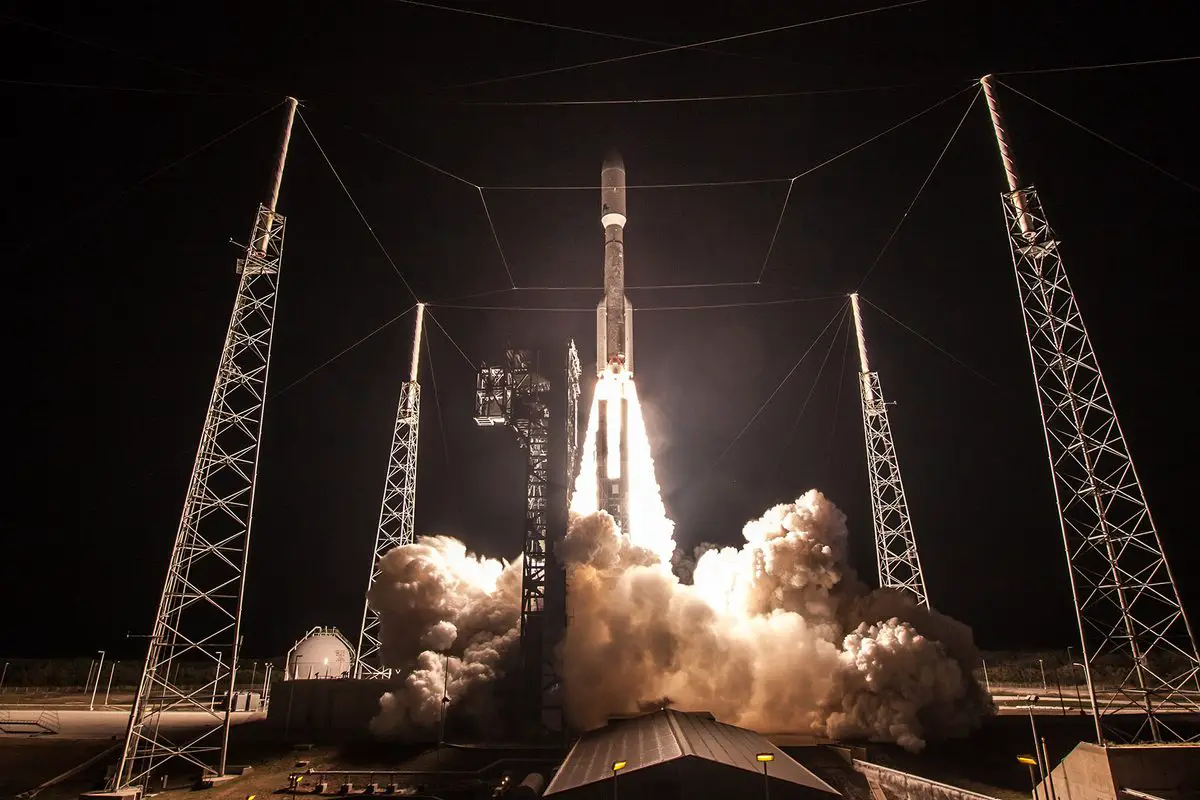Nasa succesfully launched GOES-T. The third in a series of next-generation weather satellites for the National Oceanic and Atmospheric Administration (NOAA) was successfully launched at 4:38 p.m. EST Tuesday aboard a United Launch Alliance Atlas V rocket from Cape Canaveral Space Force Station. GOES-T, the newest Geostationary Operational Environmental Satellite, launched on a United Launch Alliance Atlas V rocket from Cape Canaveral Space Force Station.
“We at NASA are proud to support our joint agency partner, NOAA, and their mission to provide critical data and imagery to forecasters and researchers tracking hazardous weather. While the GOES-R series satellites’ main job is to help with weather prediction, these satellites produce observations that also help with NASA science. Our agencies’ collaboration brings great benefits toward understanding our planet.”
-NASA Deputy Administrator Pam Melroy
Nasa launched GOES-T
A new satellite in the GOES series will provide global coverage of weather and hazardous environmental conditions, according to NASA. The GOES program also foresees space weather near Earth that can cause satellite electronics and GPS disruption as well as radio communication problems.
“We at NASA feel honored to continue to work with NOAA on this strategic and successful partnership. Besides our work on spacecraft development and launch, NASA supported science teams are looking forward to analyzing the precious data that GOES-T will provide. These observations are a key part of our research towards improving understanding and models of climate, weather, and space weather – models that, in turn, support NOAA’s crucial work as they lead the weather and space weather forecasts for the nation.”
-Thomas Zurbuchen, the associate administrator for the Science Mission Directorate at NASA Headquarters in Washington

GOES-T, now known as GOES-18, will be renamed after it reaches a geostationary orbit 22,300 miles above Earth. Following a successful instrument and system checkout, GOES-18 will begin operations over the United States West Coast and Pacific Ocean. This placement puts it in an excellent position to watch weather sweeping from the west across the United States—providing forecasters with an upstream perspective of what’s ahead.
“This launch continues a 48-year history of NOAA, NASA, industry, and academia working together on geostationary satellite observations. GOES satellites help us every day. They bring advanced new capabilities to help forecasters better monitor and predict dangerous environmental conditions like hurricanes, thunderstorms, floods, and fires.”
-John Gagosian, director of NASA’s Joint Agency Satellite Division
The Magnetometer instrument for GOES-T, as well as the future GOES-U satellite, was built by NASA’s Goddard Space Flight Center in Greenbelt, Maryland. The Launch Services Program at NASA’s Kennedy Space Center in Florida handled launch management for the mission.
The GOES-R Series Program is the name given to a series of weather satellites operated by NASA and NOAA. The program was established by an integrated NOAA-NASA office, which manages the ground system, operates the satellites, and distributes their data to users worldwide. Lockheed Martin develops, manufactures, and tests the GOES-R series satellites. L3Harris Technologies provides the Advanced Baseline Imager (ABI) instrument payload as well as the ground system, which includes the antenna system for data reception.





